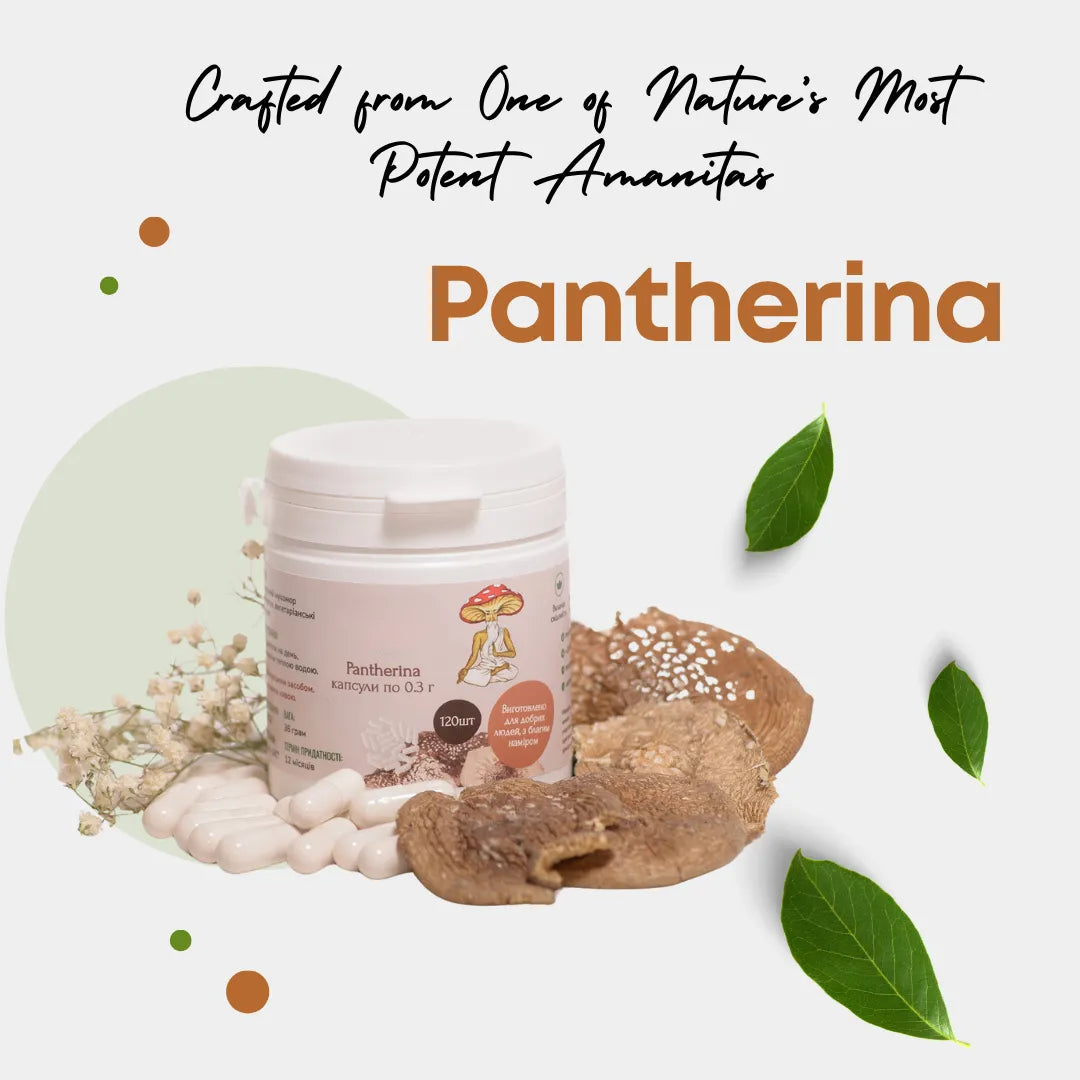-
Red Amanita 
Red Amanita
$33.00Red Amanita
$33.00 -
Amanita Dried 
Amanita Dried
$35.00Amanita Dried
$35.00 -
Pantherina 
Pantherina
$45.00Pantherina
$45.00 -
Golden Mushroom Mix 
Golden Mushroom Mix
$21.00Golden Mushroom Mix
$21.00 -
Unopened VIP  Sale
SaleUnopened VIP
$75.00$65.00Unopened VIP
$65.00$75.00 -
Amanita  Sale
SaleAmanita
$33.00Amanita
$33.00
Fly Agarics: What are they? How do they look? And where do they grow naturally?
Amanita Muscaria, also known as Fly Agaric mushroom, is one of the most recognizable wild mushrooms due to its bright red cap with white spots. Found in forests across North America, Europe, and Asia, it continues to fascinate for its unique appearance. Throughout history, it became deeply embedded in folklore, traditional practices, and artistic representations — especially in Northern and Eastern Europe and Indigenous North American traditions.
Biological description of the Amanita Muscaria
Amanita Muscaria is a well-known species in the Amanitaceae family of fungi. It features a rounded red cap (often 8–20 cm wide), covered with white warts, a thick white stem with a skirt-like ring, and a bulbous base. This mushroom’s unique look has attracted attention from mushroom collectors, naturalists, and botanical artists in the U.S. and beyond.
Etymology
The Latin name of this mushroom, Amanita Muscaria, reflects both its scientific classification and historical use. Amanita refers to the fungal genus, while Muscaria comes from musca (Latin for "fly"). In historical Europe, people placed slices of this mushroom in milk to attract and eliminate flies — hence the name “Fly Agaric.”
Usage history
Amanita Muscaria has been used symbolically and ceremonially across centuries. In Siberia, shamans employed it for spiritual rituals. Certain Native American tribes reportedly recognized its presence in seasonal ceremonies. In European folklore, it became a symbol of good fortune, protection, and mystical transformation.
It is frequently associated with Soma, the sacred drink referenced in ancient Indian texts, and appears widely in medieval European artwork, myth, and fairy tales — from Scandinavian legends to Alpine folk traditions.
Chemical composition, active substances
The two primary bioactive compounds in Amanita Muscaria are ibotenic acid and muscimol. These compounds are the subject of ongoing scientific research, particularly on how they transform during proper drying.
Early studies in the 1980s and continuing modern investigations in Europe and the U.S. suggest that drying the mushroom between 45–50°C (113–122°F) allows for the conversion of ibotenic acid into muscimol — a substance of high interest in neuroscience laboratories.
⚠️ These references are provided strictly for informational purposes. Our products are not for consumption.
The use of Amanita Muscaria in folk medicine
In traditional societies, Amanita Muscaria played an important symbolic role. While no modern medical use is claimed or permitted, historical references indicate its presence in cultural rituals that emphasized seasonal balance, clarity, and transition.
It was not just a symbol of mysticism but of nature’s cycles, observed in cultures across Eastern Europe, Central Asia, and the Pacific Northwest.
Useful properties of Fly Agaric (Traditional References Only)
⚠️ This list is based on historical records only and does not reflect medical or scientific claims. Our products are sold for decorative and research use only.
-
Association with calm and sleep cycles
-
Mood stabilization and spiritual grounding
-
Symbolic pain-relief rituals in cultural practices
-
Immune-related folklore symbolism
-
Traditional use in endurance ceremonies
-
Folkloric role in overcoming limiting habits
-
Cultural references to topical healing
-
Historic notes on renewal and inner strength
Amanita Pantherina – A Close and Potent Relative of Fly Agaric
Amanita Pantherina, also known as the Panther Cap, is a lesser-known but closely related species to Amanita Muscaria. Recognizable by its brown cap with white warts and similar stem structure, it appears in many of the same forests throughout Europe, Asia, and parts of North America.
What sets Amanita Pantherina apart is its concentration of muscimol, the naturally occurring compound also found in Muscaria. According to historical references and laboratory analysis, Pantherina can contain up to five times more muscimol than Fly Agaric. This has made it a focus of interest in traditional accounts, where it was often approached with greater caution and respect due to its potency.
While both mushrooms have appeared in cultural and ceremonial texts, Pantherina was typically used more sparingly or reserved for specific symbolic purposes. Today, it remains valued for ethnobotanical study, incense use, and artistic or educational display
How to properly prepare and take Amanitas
⚠️ For educational purposes only — not instructions for use.
Historical records describe drying Fly Agaric mushrooms at 45–50°C (113–122°F) to preserve their color and reduce bitterness. This traditional method also altered the chemical profile, transforming ibotenic acid into muscimol. The process helped maintain the white underside of the cap, prized for both ritual and decorative purposes.
This technique is followed today in many non-consumable artisan preparations across the U.S. and Europe.
What is Amanita Muscaria microdosing?
Microdosing refers to the cultural practice of consuming very small amounts of a natural substance over time — a concept seen in various traditional contexts. While Amanita Muscaria is not sold or intended for ingestion, some historical references describe taking 0.5–1g per day, often in warm water, especially in the morning for grounding or evening for rest.
Again, this is presented for historical reference only. Our Fly Agaric is not for consumption in any form.
Safe dosage of Fly Agaric (Historical Record Only)
In ethnographic accounts, a common ceremonial approach was micro-quantities of 0.5 to 1 gram of properly dried caps. It was believed to offer subtle effects when consumed as part of a spiritual framework. Larger amounts were linked to strong altered states, often recorded as mystical visions or heightened dreams.
These observations are cited in folk medicine archives, not as modern advice. Today, Fly Agaric is typically sold as a decorative mushroom or for ethnobotanical study.
Harm of Fly Agaric and contraindications
⚠️ Raw or incorrectly prepared Fly Agaric mushrooms can cause adverse effects. That’s why traditional preparation methods — such as air-drying or slow heating — were carefully followed in ceremonial use.
People with health conditions, those who are pregnant or nursing, and anyone under 18 should not handle or be exposed to this product. Our Amanita Muscaria is not intended for ingestion and is sold only for decorative, incense, and research purposes.
Is Amanita Muscaria legal?
Fly Agaric mushrooms are legal in many U.S. states when sold for non-consumable purposes like incense, decoration, or educational use. However, laws vary, and buyers are responsible for ensuring their compliance with local, state, and federal law.
All products are clearly labeled “Not for Consumption” and are shipped accordingly.
Comparing the benefits of Fly Agaric and other mushrooms
Amanita Muscaria has been revered for centuries in spiritual and seasonal traditions. Meanwhile, other popular functional mushrooms in the U.S. include:
-
Lion’s Mane – valued in tradition for mental clarity
-
Reishi – linked to inner balance and longevity themes
-
Chaga – used in Northern folklore for seasonal support
-
Cordyceps – noted for energy and movement symbolism
While our Fly Agaric mushroom is not for consumption, it is treated with the same care and precision — honoring the deep-rooted heritage behind every cap.
Made and certified in Ukraine – Shipped to the U.S.
All Amanita Muscaria products are prepared under strict drying and handling standards, using traditional methods passed down through generations. Our products are:
-
Not intended for human consumption
-
Labeled appropriately
-
Shipped with care for display, incense, and educational use
📦 Keep out of reach of children and pets.
📍 Check your local laws before purchase.










































